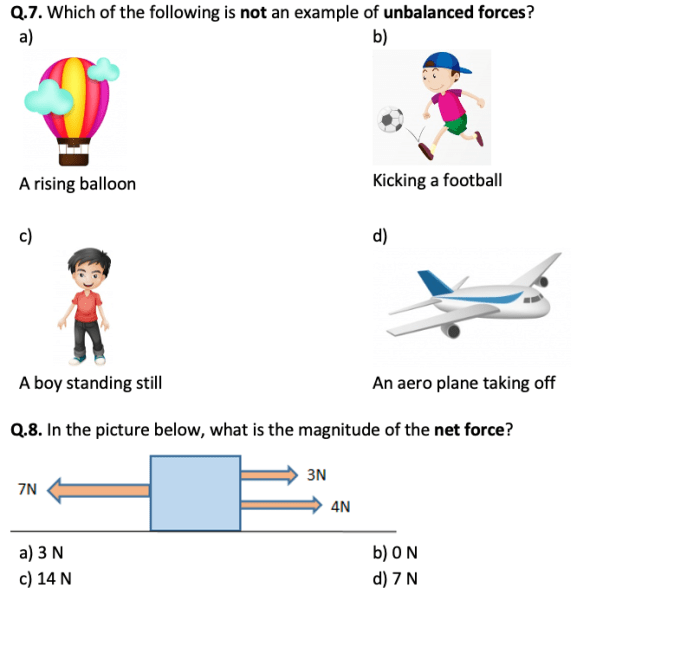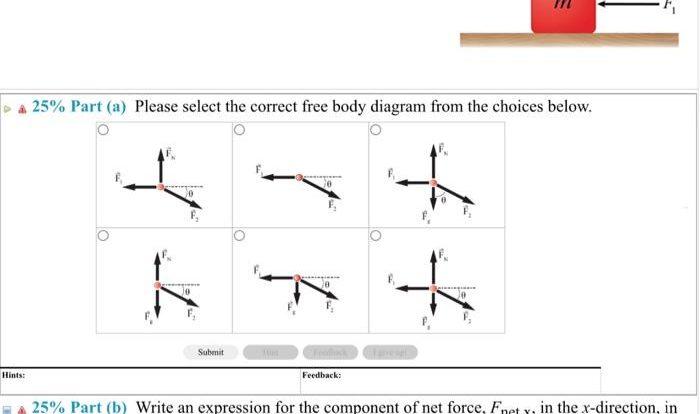Welcome to our comprehensive balanced and unbalanced forces worksheet with answer key, meticulously crafted to provide an in-depth understanding of this fundamental concept. This worksheet delves into the intricacies of balanced and unbalanced forces, their impact on objects, and their practical applications across various disciplines.
As you embark on this educational journey, you will gain a profound understanding of forces in equilibrium, enabling you to determine when forces cancel each other out. Moreover, you will explore real-life examples of balanced and unbalanced forces, solidifying your grasp of these concepts.
Balanced and Unbalanced Forces

Forces can be classified into two types: balanced and unbalanced. Balanced forces occur when the net force acting on an object is zero, resulting in no change in the object’s motion. On the other hand, unbalanced forces occur when the net force acting on an object is not zero, causing a change in the object’s motion.
For example, if two people push on a box with equal force in opposite directions, the forces are balanced, and the box remains stationary. However, if one person pushes with more force than the other, the forces are unbalanced, and the box will move in the direction of the stronger force.
Effects of Balanced and Unbalanced Forces on Objects, Balanced and unbalanced forces worksheet with answer key
Balanced forces do not affect an object’s motion, while unbalanced forces cause a change in motion. An object at rest will remain at rest under the influence of balanced forces, and an object in motion will continue moving at a constant velocity with balanced forces.
Unbalanced forces, on the other hand, can cause an object to accelerate, decelerate, or change direction. For instance, an unbalanced force applied to a ball will cause it to accelerate in the direction of the force.
Forces in Equilibrium

Forces in equilibrium occur when the net force acting on an object is zero. In other words, the forces acting on the object cancel each other out.
To determine if forces are in equilibrium, we can use the following equation:
ΣF = 0
where ΣF represents the net force acting on the object.
For example, if a book is resting on a table, the gravitational force pulling the book downward is balanced by the normal force exerted by the table pushing the book upward. As a result, the net force on the book is zero, and the book remains in equilibrium.
Applications of Balanced and Unbalanced Forces: Balanced And Unbalanced Forces Worksheet With Answer Key
Balanced and unbalanced forces have numerous applications in everyday life, including:
- Sports:Balanced forces are used to maintain a stable posture during activities like running and swimming. Unbalanced forces are used to accelerate or decelerate, such as when kicking a soccer ball or jumping.
- Engineering:Balanced forces are used to design structures that can withstand external forces without collapsing. Unbalanced forces are used to move objects, such as using a crane to lift a heavy load.
- Medicine:Balanced forces are used to stabilize the body during surgery. Unbalanced forces are used to manipulate bones during orthopedic procedures.
Helpful Answers
What is the difference between balanced and unbalanced forces?
Balanced forces act on an object in equal magnitude and opposite directions, resulting in no net force and no acceleration. Conversely, unbalanced forces act on an object with different magnitudes or directions, causing a net force and acceleration.
How can I determine if forces are in equilibrium?
To determine if forces are in equilibrium, calculate the vector sum of all forces acting on an object. If the resultant force is zero, the forces are in equilibrium.
Provide an example of a balanced force in everyday life.
A book resting on a table is an example of a balanced force. The force of gravity pulling the book downward is balanced by the normal force exerted by the table pushing the book upward.
